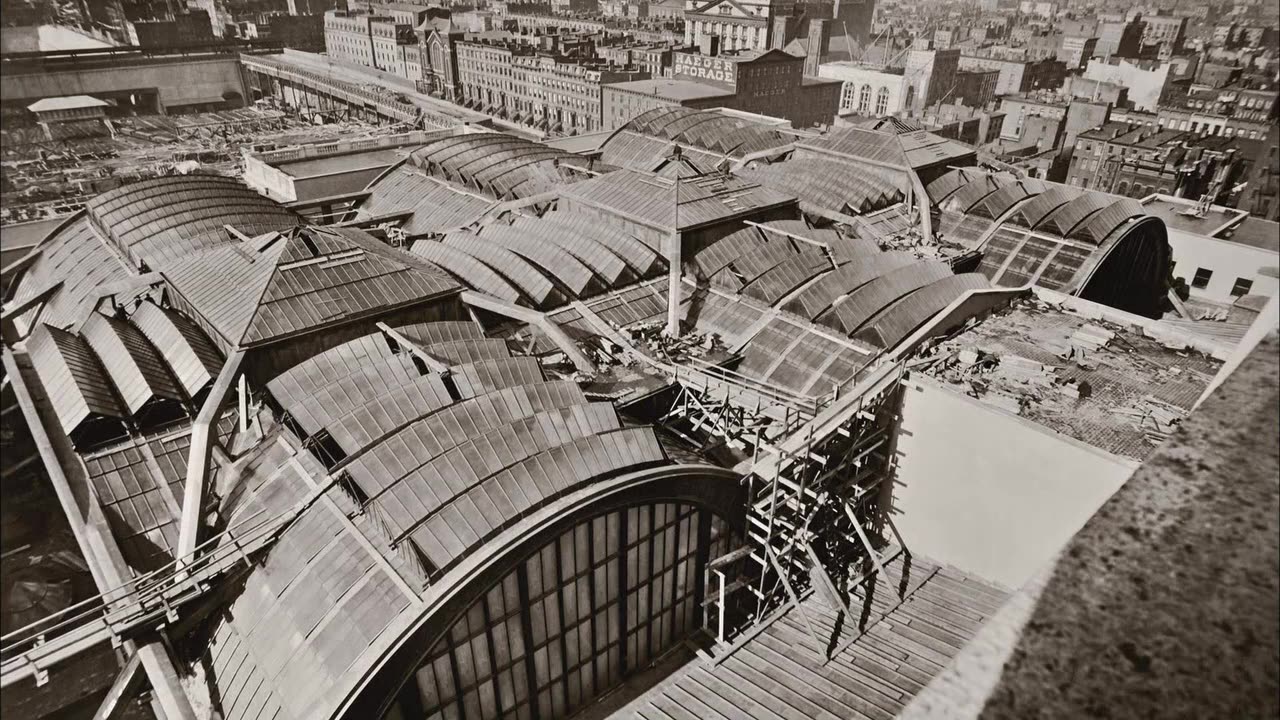Premium Only Content

PBS American Experience: The Rise and Fall of Penn Station
In 1910, the Pennsylvania Railroad, led by the company's president, Alexander Cassatt, successfully accomplished the enormous engineering feat of building tunnels under New York City's Hudson and East Rivers, connecting the railroad to New York and eventually, via the Hell Gate Bridge, to New England, knitting together the entire eastern half of the United States. The tunnels terminated in what was one of the greatest architectural achievements of it's time, Pennsylvania Station. Designed by renowned architect Charles McKim, and inspired by the Roman baths of Caracalla, Pennsylvania Station covered nearly eight acres, extended two city blocks, and housed one of the largest public spaces in the world. Neither Cassatt nor McKim lived to see their masterpiece completed, but many of the one hundred thousand attendees of Penn Station's grand opening proclaimed it to be one of the wonders of the world. But just fifty-three years after the station's opening, the unthinkable happened. What was supposed to last forever, to herald and represent the American Empire, was slated to be destroyed. The financially-strapped Pennsylvania Railroad announced it had sold the air rights above Penn Station, and would tear down what had once been it's crowning jewel to build Madison Square Garden, a high rise office building and sports complex. On the rainy morning of October 28, 1963, the demolition began; it took three years to dismantle Alexander Cassatt's monumental station. In the wake of the destruction of Penn Station, New York City established the Landmarks Preservation Commission. Grand Central Terminal, designated a historic landmark in 1967, was spared a similar fate.
-
 2:44:02
2:44:02
TimcastIRL
5 hours agoMedia Warns Of Civil War Following Charlie Kirk Assassination | Timcast IRL
379K287 -
 2:59:56
2:59:56
Laura Loomer
6 hours agoEP143: Remembering Charlie Kirk (1993–2025)
74.1K58 -
 58:04
58:04
Man in America
9 hours agoCharlie Kirk’s Assassination—An URGENT WARNING for America
48.6K52 -
 1:22:15
1:22:15
Glenn Greenwald
7 hours agoCharlie Kirk Assassination Fallout: U.S. Reps Call for Censorship; Do Graphic Videos Serve the Public Interest? Plus: WIRED Reporter on the Dark Side of Surrogacy | SYSTEM UPDATE #513
172K151 -
 1:48:36
1:48:36
Right Side Broadcasting Network
13 hours agoLIVE: President Trump Attends the Yankees Baseball Game - 9/11/25
146K24 -
 1:54:32
1:54:32
Badlands Media
7 hours agoBadlands Media Special Coverage - FBI Press Conference on Charlie Kirk's Assassination
121K18 -
 1:06:19
1:06:19
BonginoReport
8 hours agoManhunt Underway for Charlie Kirk’s Assassin - Nightly Scroll w/ Hayley Caronia (Ep.132)
272K217 -
 1:11:42
1:11:42
Flyover Conservatives
16 hours agoStructural Architect Destroys 9.11 Narrative... What Really Happened? - Richard Gage AIA | FOC Show
73.6K13 -
 1:51:14
1:51:14
Precision Rifle Network
12 hours agoS5E1 Guns & Grub - Charlie Kirk's "sniper"
42K12 -
 13:09:12
13:09:12
LFA TV
19 hours agoLFA TV ALL DAY STREAM - THURSDAY 9/11/25
406K93